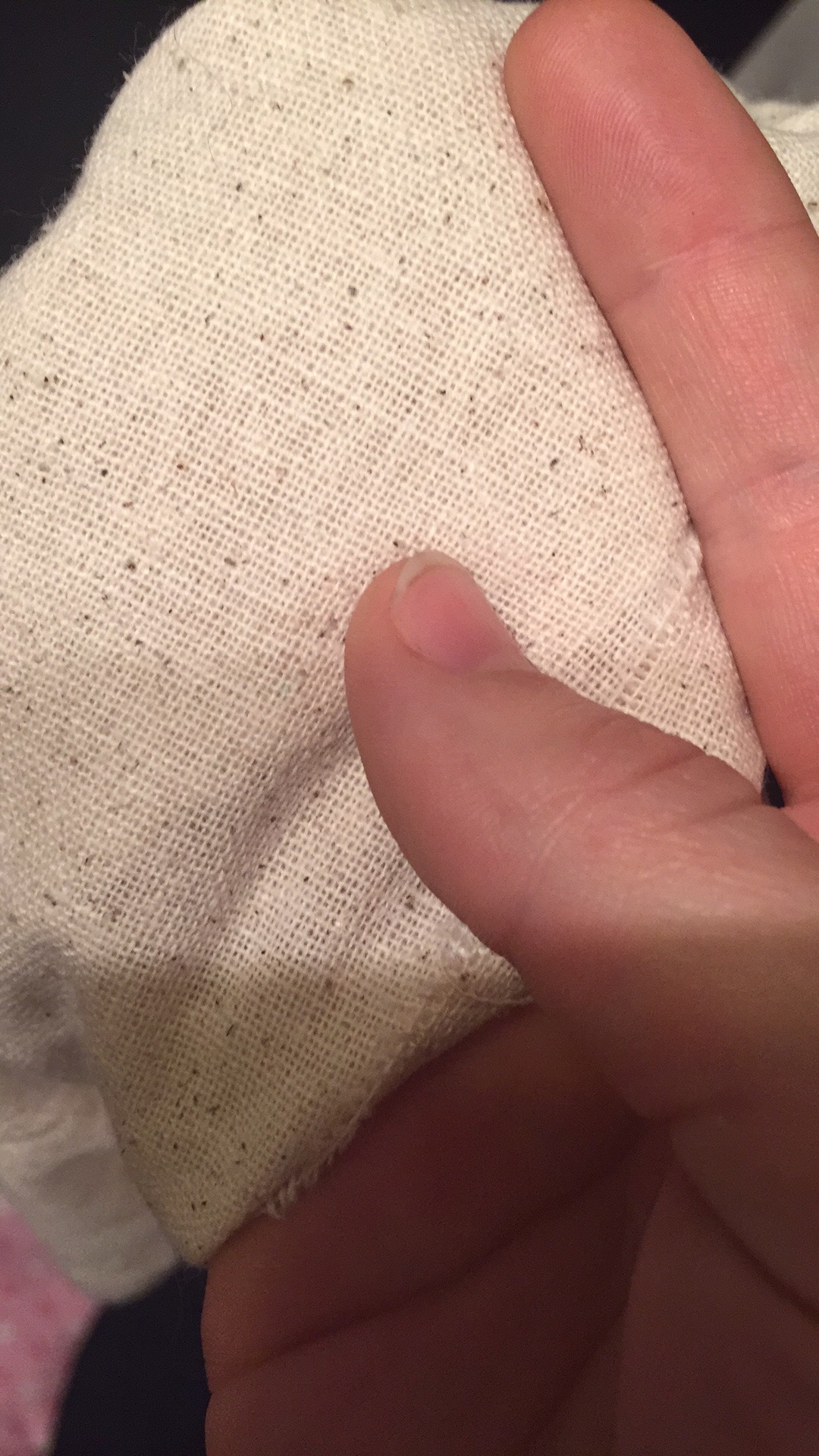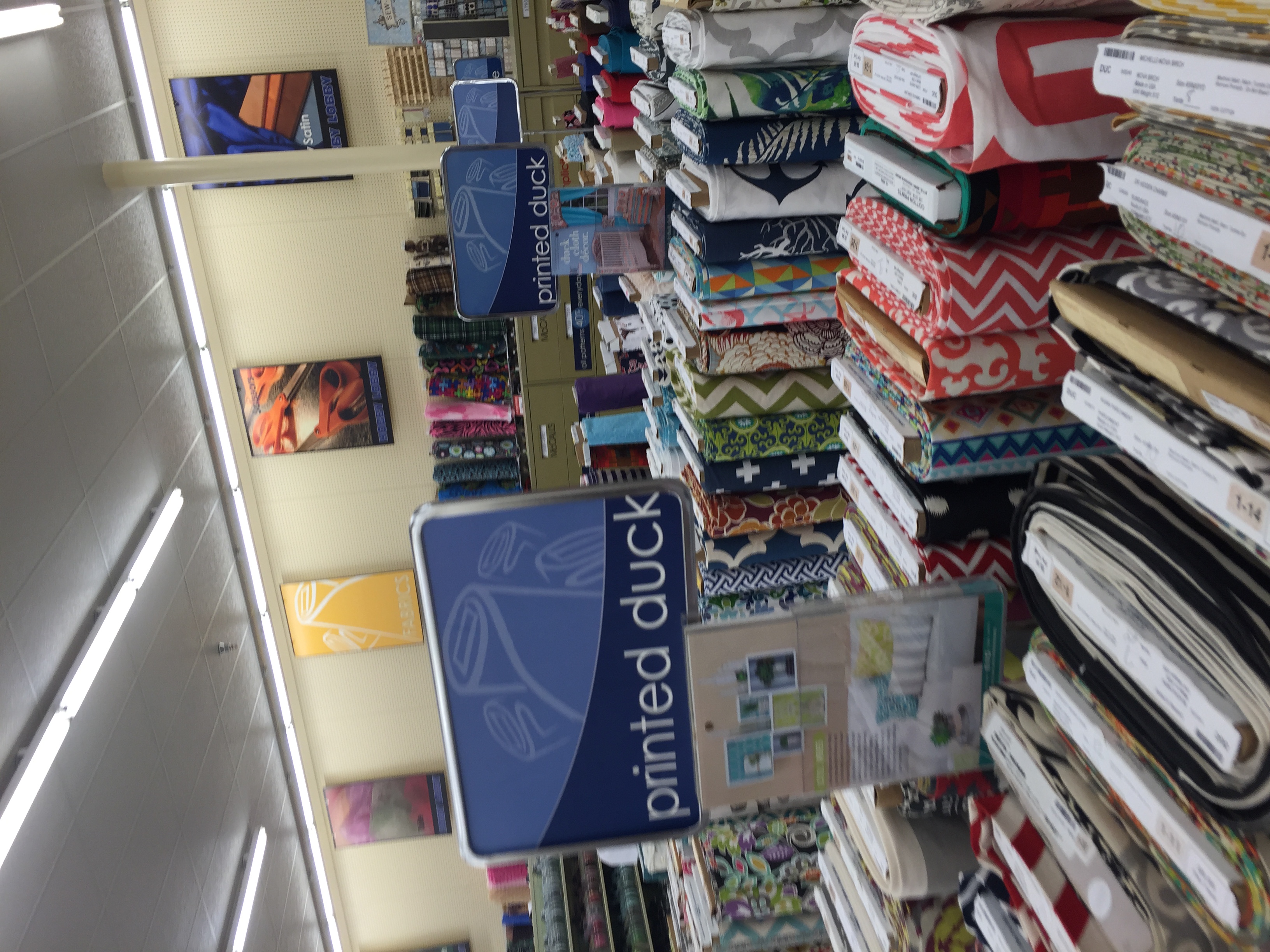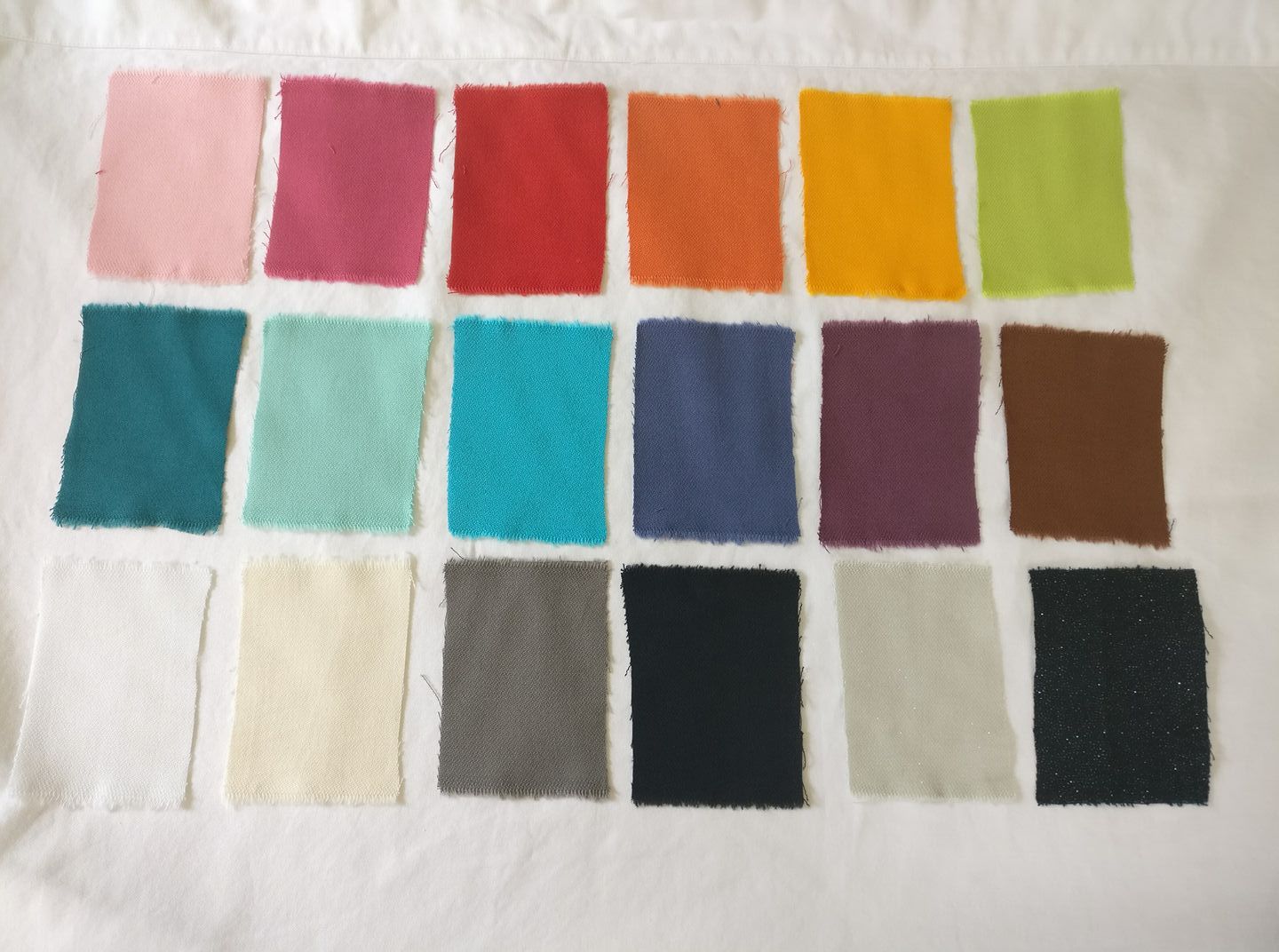| | | | |
Selecting Safe Fabric For Babywearing
Any fabric used for babywearing should pass 4 simple rules for fabric selection. It must pass all four - if it fails just one rule, it should not be used. If you still feel overwhelmed by choosing a fabric based on these four rules, look for one of the "suggested fabrics" listed after the 4 Rules - just always go back to compare it to the 4 Rules to be sure.Headed to the fabric store? Print this out for reference while shopping: 4_Rules_of_Fabric_Selection_Printable.pdfThe Four Rules of Fabric Selection
- Fiber Content - Natural fibers
- Weave - Woven without any stretch, thick visible fibers, tight weave
- Weight - Thick like denim or a sturdy tote bag
- Care instructions - Machine washable
Suggested Fabrics
- Osnaburg
- Duck Cloth
- Bottom Weight Linen
- Bottom Weight Cotton
- Cotton Tablecloths
- Colimašon et Cie or Honeycomb Loom
4 Rules of Fabric Selection
Rule 1: Fiber Content
Fabric used for babywearing should be natural fibers, like cotton or linen. Avoid polyester, acrylic, or nylon.Protip: if you have fabric and don't know what the fiber content is (such as fabric you bought ages ago, or a tablecloth from a thrift shop) you can determine a general fiber content by doing a burn test.
| Fiber Type | Recommended? | Details | Exceptions |
|---|---|---|---|
| Cotton | Yes | Cotton is a common, inexpensive fiber. It is usually breathable and easy to care for. It will, however, shrink quite a bit, so always buy 20% extra. | n/a |
| Linen, Flax | Yes | Linen is a very strong fiber and, depending on the weave, typically the most breathable fiber for the heat. It is easy to care for but may get crunchy and stiff with over-drying. Recommended to tumble dry until 80% dry and then steam iron the rest of the way dry. | Always check the fiber content on linen. A lot of fabrics sold as "linen" or "linen-look" are actually cotton, rayon, or even polyester. |
| Hemp | Yes | Hemp is incredibly strong, and a great choice for a toddler-worthy wrap. It can be difficult to "break in" or soften. Often hard to find in a light enough weight to use. | n/a |
| Wool | Yes | Softness and breathability depends on weave. Can potentially be very soft and breathable for wearing in the summer. Much higher maintenance; cannot be machine washed. Must be gently hand washed and laid flat to dry. | n/a |
| Silk | Yes | Real silk made from the silkworm (such as shantung or dupioni) is safe to use. | Lightweight silks such as charmeuse are too light and slippery. "Silkessense" sold at JoAnn Fabrics and most "silk brocades" are actually polyester or rayon. In general, silk is very slick. I would recommend only using silk you could feel in person to determine if the fabric had enough "grip" to be suitable. |
| Rayon, Bamboo, Viscose | Sometimes | Rayon is a semi-synthetic fiber. It can be made from a variety of plants, including bamboo. Rayon can be very strong and incredibly breathable, but it can also be thin and slippery. It depends on the weave. It is best to purchase rayon somewhere you can feel the fabric in person to judge it, and is prefered mixed under 40% with a "grippier" and stronger fiber like cotton or linen. It is praised for its breathability in the heat. Rayon is incredibly weak when wet. Note: All bamboo is rayon, but not all rayon is bamboo. This is a common misconception. |
|
| Spandex, Lycra | No | Avoid for use in woven wraps, ring slings, or structured carriers like mei tais and SSCs. Even 1% Spandex content is too much for these applications. | A small percentage is fine in a stretchy wrap. A water wrap worn like a stretchy wrap with 3 reinforcing passes can be made from 100% lycra. |
| Polyester, Nylon | No | Polyester is typically hot, sweaty, and not breathable. It does not hold knots well and slips through ring sling rings. It is "safe" for use in buckle carriers but will make the carrier extremely hot and sweaty. A blend of less than 40% is okay, but ideally polyester should be completely avoided. | Water carriers should be made from 100% polyester or nylon. They won't absorb water the way natural fibers will, and the moisture will help add grip to the rings or knots. |
| "Other Fibers" "mixed fibers" | No | No mysteries allowed in your carrier! If it doesn't list what the fibers are, don't buy it! | n/a |
Rule 2: Weave
Fabric for woven wraps, slings, and seamed carriers should have clearly visible threads, a tight weave, and no stretch.Exception: A stretchy wrap can stretch it all four directions, but should always have 3 spread passes supporting baby to compensate and is never safe for back carries.The weave should be made of thicker, visible fibers. You should clearly be able to see the individual threads. The weave should not look "fuzzy" like flannel or fleece. Fuzzy threads indicate a pre-distressed fabric which is weaker and more prone to damage. A lower threadcount is more desirable than a high threadcount. Quilter's cotton and bedsheets have tiny threads in a high threadcount and are therefore too likely to rip easily. Imagine - which will support more weight: one tow chain, or a dozen gold chain necklaces?
You should not be able to see straight through the weave of the fabric and the fabric should allow minimal light to pass through it.
Rule 3: Weight
Fabric for babywearing should be "bottomweight." If you are shopping by feel, they should feel equivalent to a pair of jeans, men's slacks, or a sturdy tote bag. Avoid fabrics that feel closer to a dress shirt, bedsheets or a handkerchief. If you can locate osnaburg in your fabric store, this should be your gauge for the absolute MINIMUM weight of an appropriate fabric for a wrap or sling. Denim trousers should be the minimum weight for a seamed or structured carrier.Rule 4: Care Instructions
Fabrics for babywearing should be labeled as machine washable.Suggested Fabrics
Obviously this isn't every possibility, but these are the most common and most easily located fabrics. If you are overwhelmed with the possibilities at the fabric and feel like everything you pick up fails the 4 Rules listed above, choose one or two of these to specifically look for to narrow down your search.Osnaburg
 Osnaburg is typically 100% cotton (although it can be linen, and some has a miniscule amount of polyester.) It looks similar to muslin, but the threads are much thicker. It comes in a natural off-white color with light brown flecks. It feels slightly scratchy/pilly when new. Once it is broken in, it is nearly as breathable as linen, a great option for hot weather, and blanket soft. It can be used natural colored or as a dye blank as it takes color like a dream.
It can be found at most fabric stores in the USA (JoAnn 's, Hobby Lobby, Walmart, Hancock) but is notoriously difficult to find outside of the USA. Check the Materials Sourced by Country page to locate a good source or substitute in your country. In most stores, it will be sorted with the burlap and other "utility fabrics." Most fabric store employees have not heard of it and will not be able to help you find it. Just search all the bolts for a fabric that looks right and check the bolt tag - osnaburg will be clearly labeled as such. One of its key selling points is the low cost. It can typically be found around $3/yard, although for stores like JoAnn 's or Hobby Lobby you'll want to use a 40% off coupon to get this price.
A note about osnaburg: most fabrics go through a lot of processing to get them bleached and dyed or printed. Osnaburg is sold in a very raw state, which means it is still gunked up with lots of mysterious chemicals and dirt. That simply means that osnaburg needs to be scoured before using or dyeing. It sounds more difficult than it is and is actually a fairly simple process involving $5 worth of materials (or less) and can be done in an insulated cooler or kitchen sink.
In addition, osnaburg tends to shrink a lot. Unless your bolt specifies "preshrunk," always buy 20% more fabric than you need. 6 yards of osnaburg will easily shrink up to only 5 yards. Preshrunk osnaburg will still shrink about 10% so take that into account when purchasing your fabric.
Osnaburg is typically 100% cotton (although it can be linen, and some has a miniscule amount of polyester.) It looks similar to muslin, but the threads are much thicker. It comes in a natural off-white color with light brown flecks. It feels slightly scratchy/pilly when new. Once it is broken in, it is nearly as breathable as linen, a great option for hot weather, and blanket soft. It can be used natural colored or as a dye blank as it takes color like a dream.
It can be found at most fabric stores in the USA (JoAnn 's, Hobby Lobby, Walmart, Hancock) but is notoriously difficult to find outside of the USA. Check the Materials Sourced by Country page to locate a good source or substitute in your country. In most stores, it will be sorted with the burlap and other "utility fabrics." Most fabric store employees have not heard of it and will not be able to help you find it. Just search all the bolts for a fabric that looks right and check the bolt tag - osnaburg will be clearly labeled as such. One of its key selling points is the low cost. It can typically be found around $3/yard, although for stores like JoAnn 's or Hobby Lobby you'll want to use a 40% off coupon to get this price.
A note about osnaburg: most fabrics go through a lot of processing to get them bleached and dyed or printed. Osnaburg is sold in a very raw state, which means it is still gunked up with lots of mysterious chemicals and dirt. That simply means that osnaburg needs to be scoured before using or dyeing. It sounds more difficult than it is and is actually a fairly simple process involving $5 worth of materials (or less) and can be done in an insulated cooler or kitchen sink.
In addition, osnaburg tends to shrink a lot. Unless your bolt specifies "preshrunk," always buy 20% more fabric than you need. 6 yards of osnaburg will easily shrink up to only 5 yards. Preshrunk osnaburg will still shrink about 10% so take that into account when purchasing your fabric.
Duck Cloth
 Duck is a type of canvas that is easy to find, affordable, and comes in a variety of beautiful prints. Some stores label it in its own section, and others will hide it near the upholstery and home decor fabrics. It will feel slightly stiff and canvas-y on the bolt. It should remind you of a sturdy tote bag or a pair of canvas shoes.
Printed, patterned duck cloth is usually in the 5-7oz range. If you are shopping online, as long as it is listed as "printed duck" or "duck cloth" or "duck canvas" then it is safe to use, even if it says "lightweight." Duck technically comes in a variety of weights all the way up to 17oz per square yard, so "lightweight" duck is still a "heavyweight" fabric in the grand scheme of things. Most fabric stores won't carry a "heavyweight" duck - it is designed for things like cots and sand bags - but most stores' solid colored "duck canvas," unlike their printed, patterned duck, is usually more in the 9oz range. It is still safe to use, just know that it will take longer to break in and soften.
In the US, a great source for pretty printed duck cloth is the Waverly brand duck from Wal-mart, which is only $4/yd. This is a bit lighter than other duck cloth, making it idea for wraps, slings, and wrap straps; however, it does make it a bit too thin to use as the internal layer of a 3-layer body panel.
Online, you can try sources like fabric.com or Cotton Candy Fabrics (but with fabric.com, keep an eye on the care instructions - they tend to have a lot of dry clean only stuff.)
Duck is a type of canvas that is easy to find, affordable, and comes in a variety of beautiful prints. Some stores label it in its own section, and others will hide it near the upholstery and home decor fabrics. It will feel slightly stiff and canvas-y on the bolt. It should remind you of a sturdy tote bag or a pair of canvas shoes.
Printed, patterned duck cloth is usually in the 5-7oz range. If you are shopping online, as long as it is listed as "printed duck" or "duck cloth" or "duck canvas" then it is safe to use, even if it says "lightweight." Duck technically comes in a variety of weights all the way up to 17oz per square yard, so "lightweight" duck is still a "heavyweight" fabric in the grand scheme of things. Most fabric stores won't carry a "heavyweight" duck - it is designed for things like cots and sand bags - but most stores' solid colored "duck canvas," unlike their printed, patterned duck, is usually more in the 9oz range. It is still safe to use, just know that it will take longer to break in and soften.
In the US, a great source for pretty printed duck cloth is the Waverly brand duck from Wal-mart, which is only $4/yd. This is a bit lighter than other duck cloth, making it idea for wraps, slings, and wrap straps; however, it does make it a bit too thin to use as the internal layer of a 3-layer body panel.
Online, you can try sources like fabric.com or Cotton Candy Fabrics (but with fabric.com, keep an eye on the care instructions - they tend to have a lot of dry clean only stuff.)
Bottom Weight Linen
Bottom Weight Cotton
Tablecloths
Woven Wrap Fabric by the meter
 Referred to as "C&C" fabric, Colimašon et Cie sells woven wrap material by the meter. You can buy either 75cm wide (which is standard wrap or sling width) or 150 cm wide (double width.) Since it is a 220gms broken twill weave, it will feel exactly like many purpose-woven commercial wraps. It makes great wrap-conversion meh dais and structured carriers, too. You can also buy a natural or white finished wrap as a dye blank if you prefer. It is on the thin side for commercial woven wraps, and on the heavier side for most DIY fabrics used for woven wraps.
To the right is a picture of Colimašon et Cie's color selection. At this point they only offer solid colors in cotton, solid colors in a cotton/silk blend, and a few solid colors with a one sided glitter finish in cotton.
The Honeycomb Loom is another company that sells woven wrap fabric by the meter. Their fabric is slightly more expensive, but has an interesting pattern and a bit more grip to it.
If you are a member of our Facebook group, I did a video talking about some of the differences between these two brands and their (perceived) wrap qualities (with the disclaimer that I have not used either of these to wrap with yet.)
Referred to as "C&C" fabric, Colimašon et Cie sells woven wrap material by the meter. You can buy either 75cm wide (which is standard wrap or sling width) or 150 cm wide (double width.) Since it is a 220gms broken twill weave, it will feel exactly like many purpose-woven commercial wraps. It makes great wrap-conversion meh dais and structured carriers, too. You can also buy a natural or white finished wrap as a dye blank if you prefer. It is on the thin side for commercial woven wraps, and on the heavier side for most DIY fabrics used for woven wraps.
To the right is a picture of Colimašon et Cie's color selection. At this point they only offer solid colors in cotton, solid colors in a cotton/silk blend, and a few solid colors with a one sided glitter finish in cotton.
The Honeycomb Loom is another company that sells woven wrap fabric by the meter. Their fabric is slightly more expensive, but has an interesting pattern and a bit more grip to it.
If you are a member of our Facebook group, I did a video talking about some of the differences between these two brands and their (perceived) wrap qualities (with the disclaimer that I have not used either of these to wrap with yet.)
For those interested in the wrap qualities of the suggested fabrics, check out these charts!--
| I | Attachment | History | Action | Size | Date | Who | Comment |
|---|---|---|---|---|---|---|---|
| |
4_Rules_of_Fabric_Selection_Printable.pdf | r1 | manage | 330.8 K | 2016-12-07 - 03:33 | AlyssaLeonard | |
| |
Colimacon.jpg | r1 | manage | 181.0 K | 2017-06-29 - 19:33 | AlyssaLeonard | |
| |
Photo_Jun_13_1_33_42_PM.jpg | r1 | manage | 2238.7 K | 2017-06-29 - 19:33 | AlyssaLeonard | |
| |
Photo_May_22_9_26_52_AM.jpg | r1 | manage | 536.2 K | 2017-06-29 - 19:33 | AlyssaLeonard |
Ideas, requests, problems regarding TWiki? Send feedback





